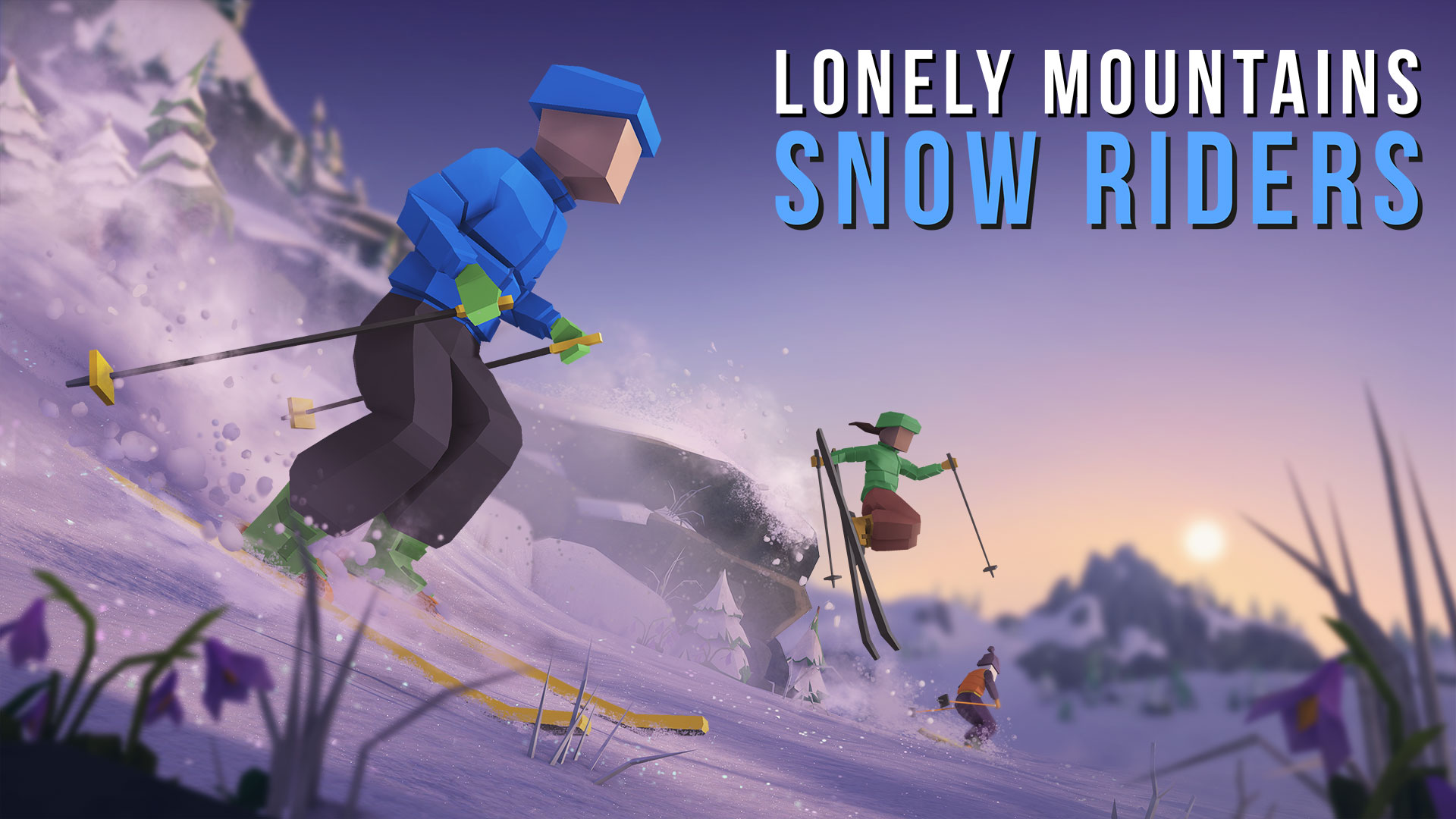
Take a breath, count to three, and launch down the slope. Lonely Mountains: Snow Riders preserves the original’s tight, physics‑first riding while expanding the playground with deeper powder, glassy ice, and audacious jumps; and, for the first time, online multiplayer that transforms solo practice into shared choreography or cutthroat races. It asks for mastery without pressure: wipe out repeatedly to learn a line, then savor the payoff of a flawless descent or the simple bliss of drifting through a sunlit chute.
What it plays like
• Physics‑driven mountain riding: Momentum, weight distribution, and surface friction all influence your line. Powder slows and buries wheels; hardpack rewards precision; ice punishes indecision; churned snow robs speed; reading terrain is as important as input timing.
• High‑risk, high‑reward runs: Land a narrow line, hit a perfect launch, or uncover a hidden shortcut and shave seconds off your best time. Crashes sting, but each wipeout teaches a micro‑lesson that makes eventual runs feel earned.
• Accessible controls, deep mastery: Simple controls get you down the hill quickly; nuance appears in chaining tricks, carrying speed through complex turns, and landing under control; the game rewards practice with clearly measurable improvement.
• Emergent route‑finding: Multiple viable lines and subtle environmental cues encourage exploration; creative routing often outpaces raw reflexes for top leaderboard times.
• Risk management as gameplay: Choosing when to push for a flashy trick or play it safe to preserve momentum becomes a continuous, satisfying trade‑off.
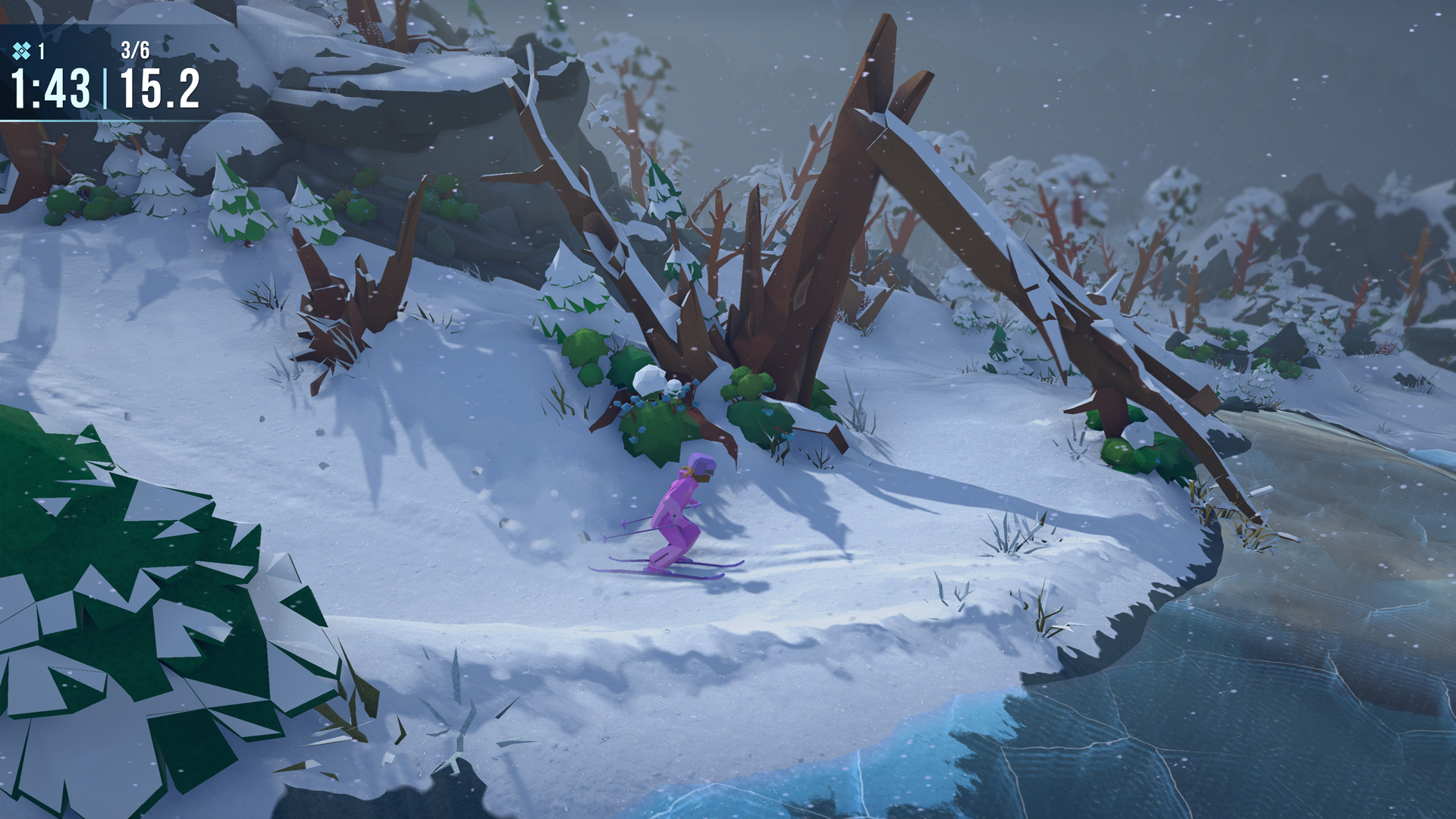
Modes and multiplayer
• Solo runs and time trials: Race against your ghosts or the global leaderboards; the game rewards both pixel‑perfect, flawless runs and clever route‑finding so you can pursue consistency or creativity depending on your playstyle.
• Co‑op descent 2–8 players: Team up to share scarce checkpoints, coordinate daring maneuvers, and pace each other down the mountain; co‑op transforms careful navigation into a synchronized, satisfying group performance.
• Versus races 2–8 players: Fast, chaotic head‑to‑head competition where shortcuts and risky lines decide winners; crossplay keeps matches populated and adds platform‑agnostic rivalries.
• Shared objectives and emergent moments: Multiplayer spawns unscripted highlights; synchronized tricks, clutch revives after wipeouts, or a teammate discovering a game‑changing line; turning runs into stories you want to rewatch and share.
• Social scaffolding: Quick invite and session tools, in‑game pinging, and easy cosmetic swapping between rounds make jumping in with friends frictionless and keep the focus on the descent.

Progression and unlocks
• Equipment and customization: Unlock a wide array of bikes, outfits, and cosmetic trinkets as you play. Many pieces subtly alter handling; prioritizing top‑end speed, cornering stability, or aerial control; so you can tune a setup that matches your route‑finding and playstyle.
• Tricks and skill expression: Pull off grabs, flips, and combos to boost score, momentum, and style. Chaining tricks increases risk and reward: longer combos multiply scoring potential and open up advanced movement techniques for players chasing high‑score runs.
• Exploration and hidden rewards: The mountain conceals shortcuts, secret lines, and optional risk paths. Explorers are rewarded with meaningful time gains, alternate routes that change run strategy, and the bragging rights that come with discovering and mastering off‑line treasures.
• Meaningful progression loop: Gear, tricks, and route knowledge combine into a satisfying loop; try new equipment to suit a line, experiment with trick chains to shave seconds, and replay runs to refine execution and climb leaderboards.
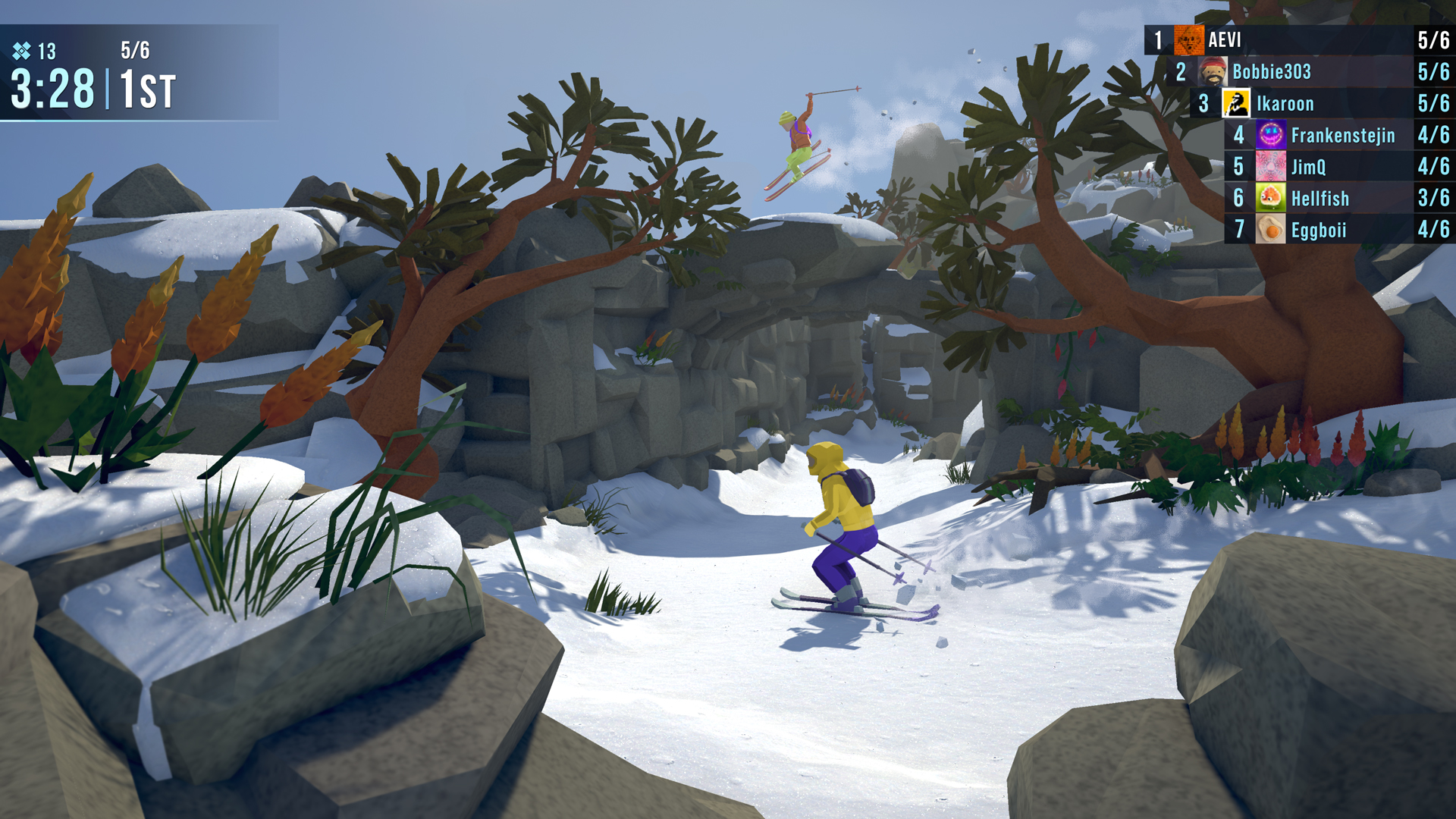
World and presentation
• Serene, purposeful level design: Each slope is hand‑crafted to blend atmosphere with gameplay: wind‑whispering pines, sunlit ridgelines, glassy ice flats, and frozen lakes that glitter when you skim them. Visual and geometric cues guide route‑finding so exploration feels rewarding rather than random.
• Readable visuals tuned for performance: Terrain, obstacles, and shortcuts are rendered with clear contrast and consistent lighting so you can read lines at speed. Spectacular moments; towering launches, snow geysers, and sunlit canyons; are staged to punctuate runs without obscuring the playfield.
• Economy of motion and camera: Smooth, responsive camera framing keeps your rider and the immediate path in focus while preserving the sense of scale; motion and camera blends emphasize speed without becoming disorienting.
• Lean, supportive soundtrack: A focused score underpins pacing; breathy ambient pieces for exploration and tighter tracks for timed runs that heighten tension without overwhelming gameplay.
• Detailed, purposeful sound design: Skids, wheel‑cuts, crunching snow, and distant wind cues give immediate, actionable audio feedback that complements visual readouts and helps you judge traction and impact.
• Atmosphere with accessibility in mind: Visual and audio cues are designed to be clear at a glance; contrast, iconography, and sound priorities help players learn lines faster and reduce needless frustration during high‑speed runs.

Strengths
• Addictive mastery loop: Exceptionally tight controls and consistent, predictable physics mean practice pays off; small improvements feel tangible and keep practice sessions motivating.
• Multiplayer that amplifies the core: Co‑op and versus modes translate solo skill into shared highlights or chaotic competition, adding fresh stakes and social moments without diluting the base gameplay.
• Exploration woven into competition: The best lines are rarely obvious; finding shortcuts and daring routes rewards creativity and strategy, so route‑finding is as valuable as raw execution.
• Clear feedback and measurable growth: Readable metrics, ghost runs, and leaderboard targets make progress visible, helping players set goals and iterate purposefully.
• Elegant balance of thrill and serenity: The game mixes adrenaline‑spiking runs with calm, scenic slopes, letting players choose between tense perfection and relaxed, scenic play.
• High replay value through role diversity: Whether you’re chasing speed, style, or teamwork, multiple viable goals (time, tricks, exploration, co‑op objectives) keep the game feeling fresh run after run.
Areas to watch
• Steep difficulty spikes: Certain routes demand pixel‑perfect execution that can overwhelm casual players; adding optional mid‑run checkpoints, adjustable assist levels, or a beginner‑friendly route indicator would preserve challenge while reducing frustration.
• Progression pacing: Cosmetic and gear unlocks are satisfying but sometimes slow; introducing shorter milestone rewards, limited‑time event tracks, or micro‑goals between major unlocks would keep motivation high for players who crave steady payoff.
• Matchmaking and session stability: Crossplay is valuable, but inconsistent lobby fill times and occasional session drops harm the social experience; prioritized matchmaking optimization, connection‑retries, and clearer join/leave feedback will make multiplayer feel reliable.
• Accessibility and onboarding: New players can be blindsided by punishing lines; a more guided onboarding (optional assisted runs, visualized risk lines, and tuned difficulty ramps) would flatten the learning curve without diluting depth.
• Private‑session and social toolset: Current lobby tools are functional but thin; richer private session features (persistent rooms, scheduled invites, host rules, and lightweight party chat) would strengthen group play and organized events.
• Reward variety tied to gameplay: Most rewards are cosmetic; periodically gating new modifiers, training packs, or optional gameplay‑affecting unlocks behind achievement tiers would give long‑term players meaningful progression that changes how the mountain is played.
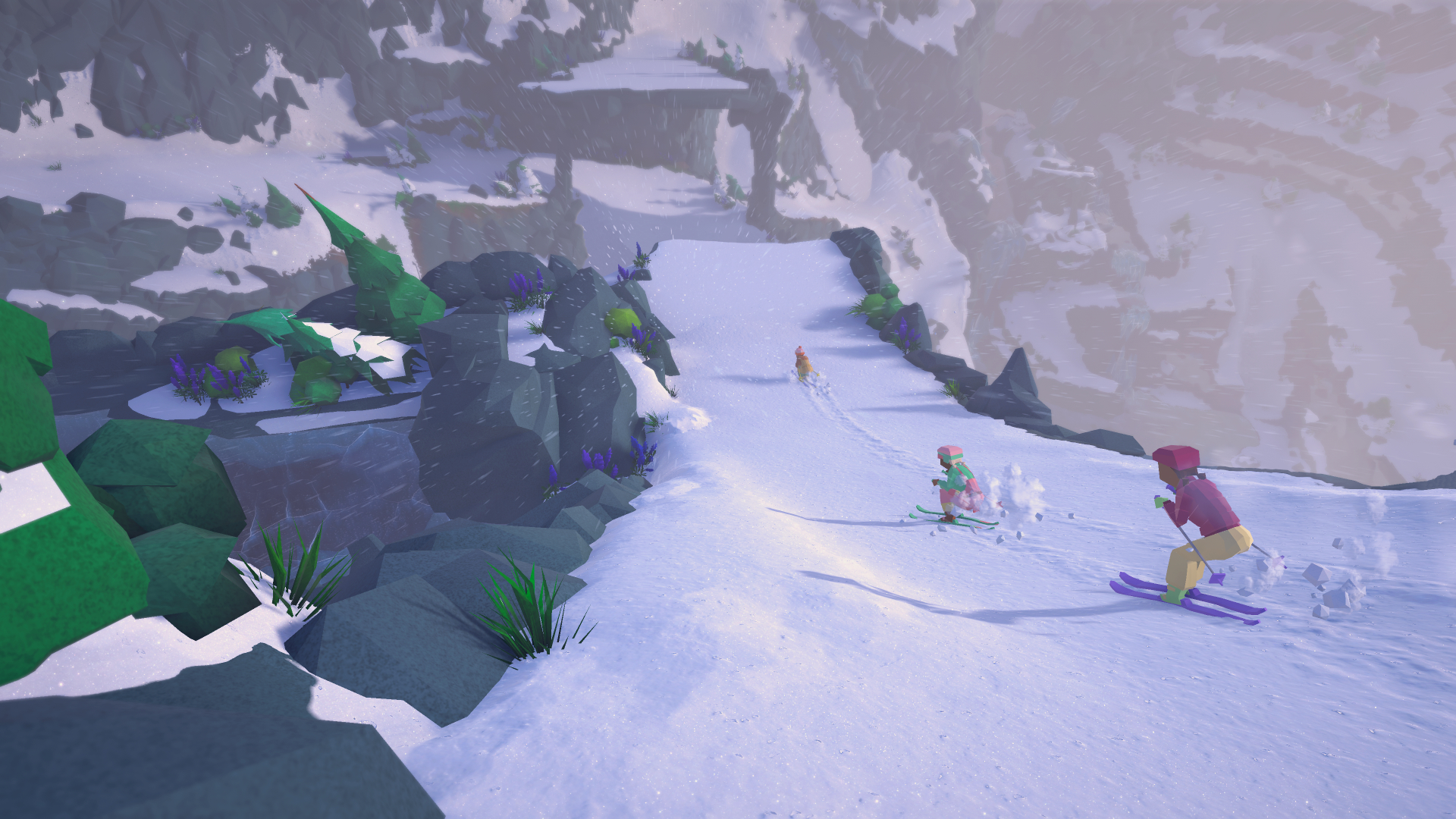
Who should play
• Riders who love physics‑based challenges and iterative practice.
• Speedrunners and leaderboard chasers who enjoy route optimization and tight execution.
• Groups of friends looking for short, intense sessions or cooperative descents that reward teamwork.
• Players who want a winter getaway that alternates between tense runs and serene exploration.
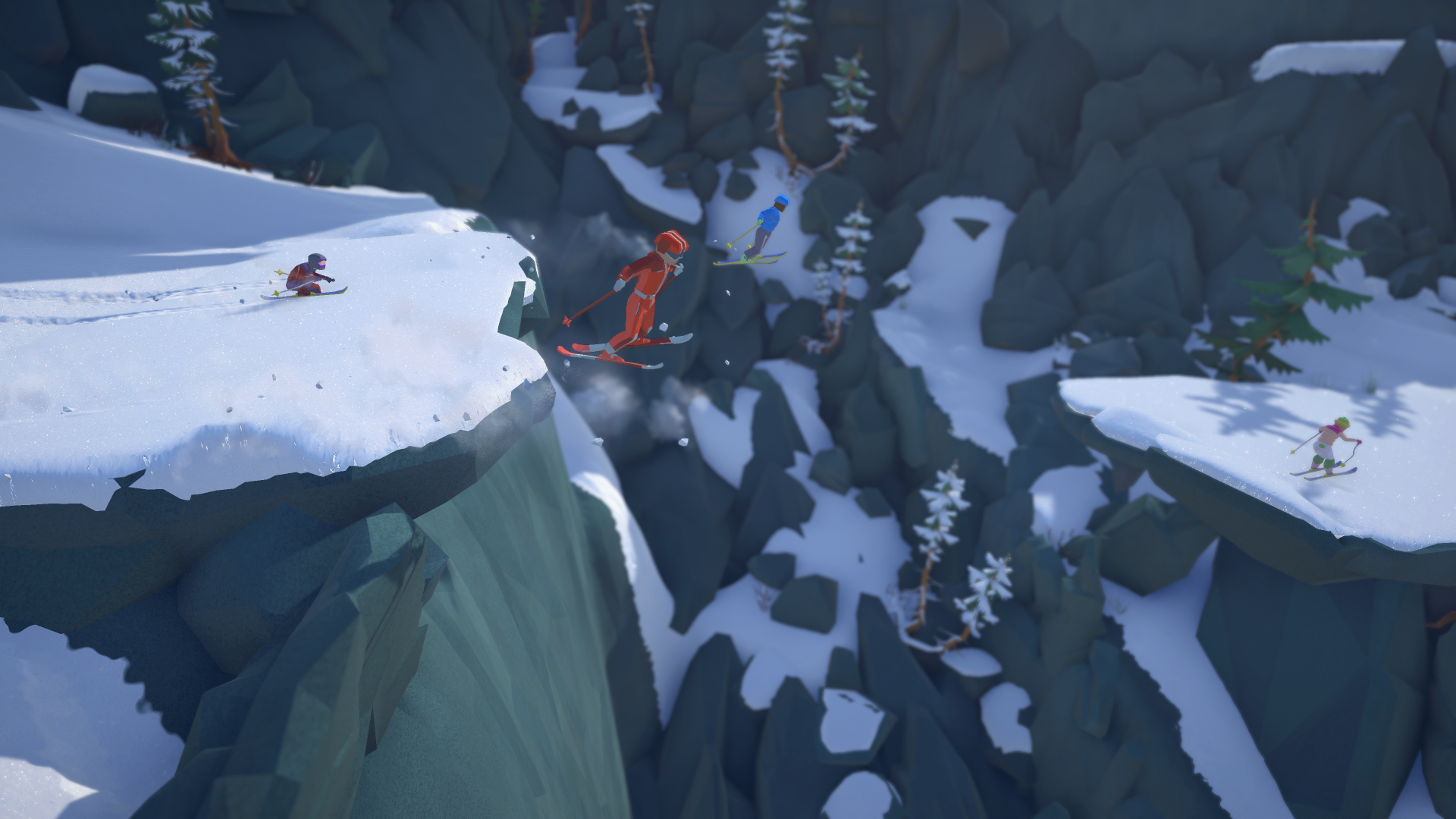
Final verdict
Lonely Mountains: Snow Riders builds on the series with thoughtful additions that deepen the core riding loop while opening it up to shared play. The physics‑first handling and measured difficulty curve remain intact, but multiplayer, expanded terrain types, and fresh gear options give players new reasons to explore lines, refine technique, and socialize. Whether you’re hunting perfect solo leaderboard runs, uncovering hidden shortcuts, or trading wipeout stories with friends after a chaotic race, Snow Riders delivers an elegant, adrenaline‑tinged mountain escape that rewards practice, creativity, and camaraderie.
Watch and Wishlist
• Wishlist the launch: Add Lonely Mountains: Snow Riders to your storefront wishlist to get notified about release discounts, demos, and major updates.
• Follow patches and events: Join the official Discord and follow the developer on storefront pages to track patch notes, seasonal events, and community playtests.
• Check MODS and Dojo after updates: After each patch, scan the MODS and Dojo tabs for new bikes, outfits, tricks, and gameplay modifiers that might change route priorities.
• Try modes before you buy: Use time trials and short versus rounds in demos or free weekends to feel the physics and matchmaking; co‑op runs show how checkpoints and teamwork reshape the descent.
• Share and scout: Upload clips of novel lines or shortcuts and watch community posts for discovered routes; player footage is a fast way to learn high‑speed lines.
• Invite friends and schedule sessions: Coordinate crossplay sessions in advance to avoid long lobby waits; private groups make co‑op descents and study runs far more productive and fun.
Key Takeaways
• Physics‑first riding: Momentum, weight distribution, and surface types (powder, hardpack, ice, churned snow) meaningfully change handling, so reading terrain is as important as input timing.
• Satisfying mastery loop: Tight, predictable controls reward practice; incremental improvements feel obvious and deeply motivating.
• Multiplayer that enhances, not replaces: 2–8 player co‑op and versus modes turn solo learning into shared choreography or frantic races, adding social stakes and emergent moments.
• Risk versus reward design: High‑risk lines, perfect launches, and shortcuts can shave seconds or end runs, creating tense decisions that keep runs compelling.
• Exploration with payoff: Hidden routes and optional paths reward curiosity with tangible time gains and bragging rights.
• Meaningful customization: Unlockable bikes, outfits, and gear subtly alter handling, letting players tune setups for speed, stability, or trickability.
• Readable presentation: Clear visual cues, focused camera work, and supportive sound design make fast decision‑making reliable at high speeds.
• Replayability through varied goals: Time trials, trick scoring, leaderboard play, and cooperative objectives give multiple reasons to return.
• Accessibility and polish opportunities: Difficulty spikes, progression pacing, and matchmaking stability are the main areas to refine for broader appeal.
• Great balance of adrenaline and serenity: The game alternates tense, high‑stakes runs with calm, scenic descents, appealing to both competitive and chill players.
Game Information:
Developer & Publisher: Megagon Industries
Platforms: Xbox Series X (reviewed), Steam - PC, PlayStation 5
Release Date: January 21, 2025
Score: 8.5 / 10
Lonely Mountains: Snow Riders scores an 8.5 for expanding a tight, rewarding downhill formula into a richer, social playground. It nails the core physics, delivers memorable level design, and adds multiplayer modes that genuinely complement solo play. Small rough edges around progression pacing, accessibility, and matchmaking keep it from perfection, but the core experience is compelling, replayable, and frequently delightful.